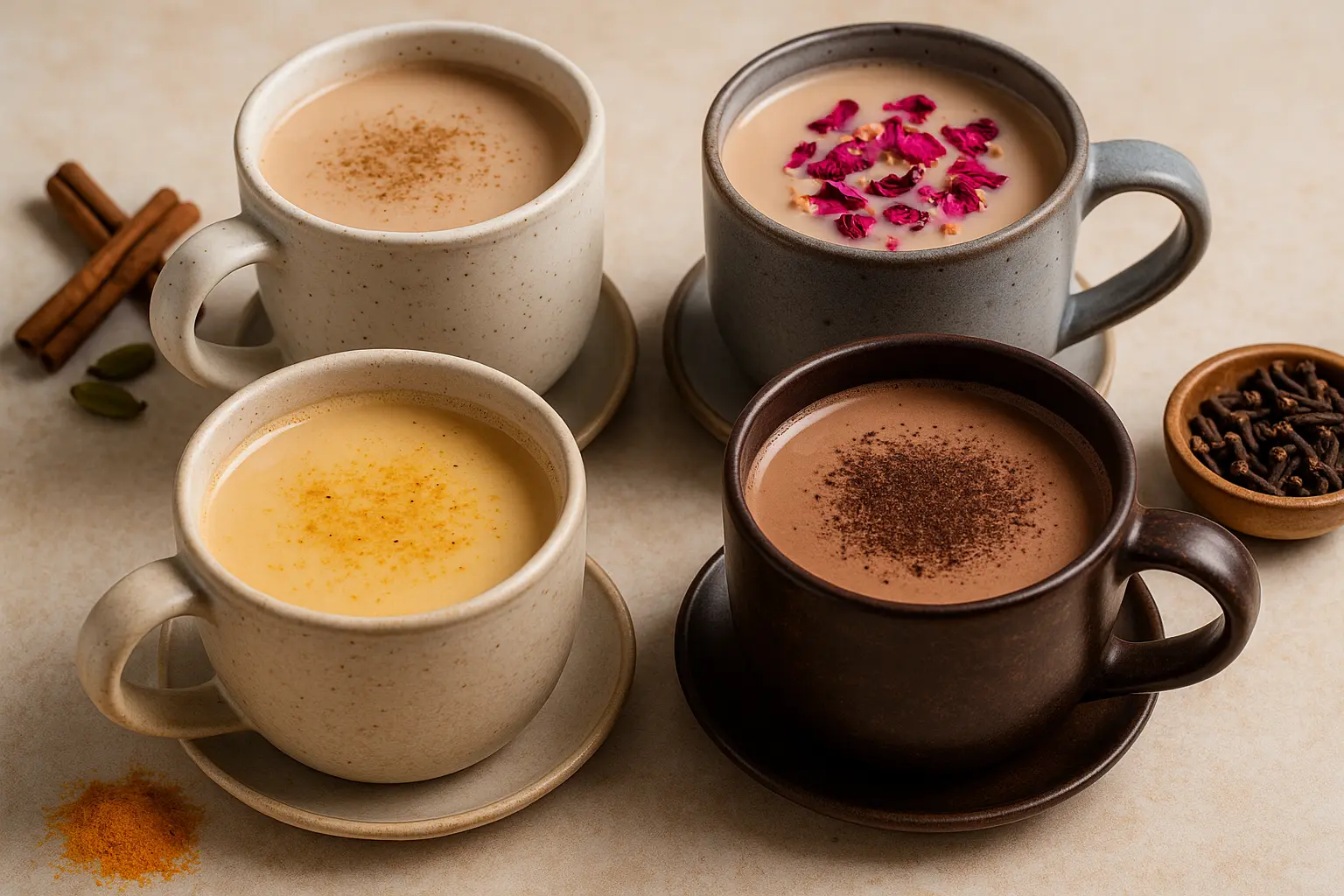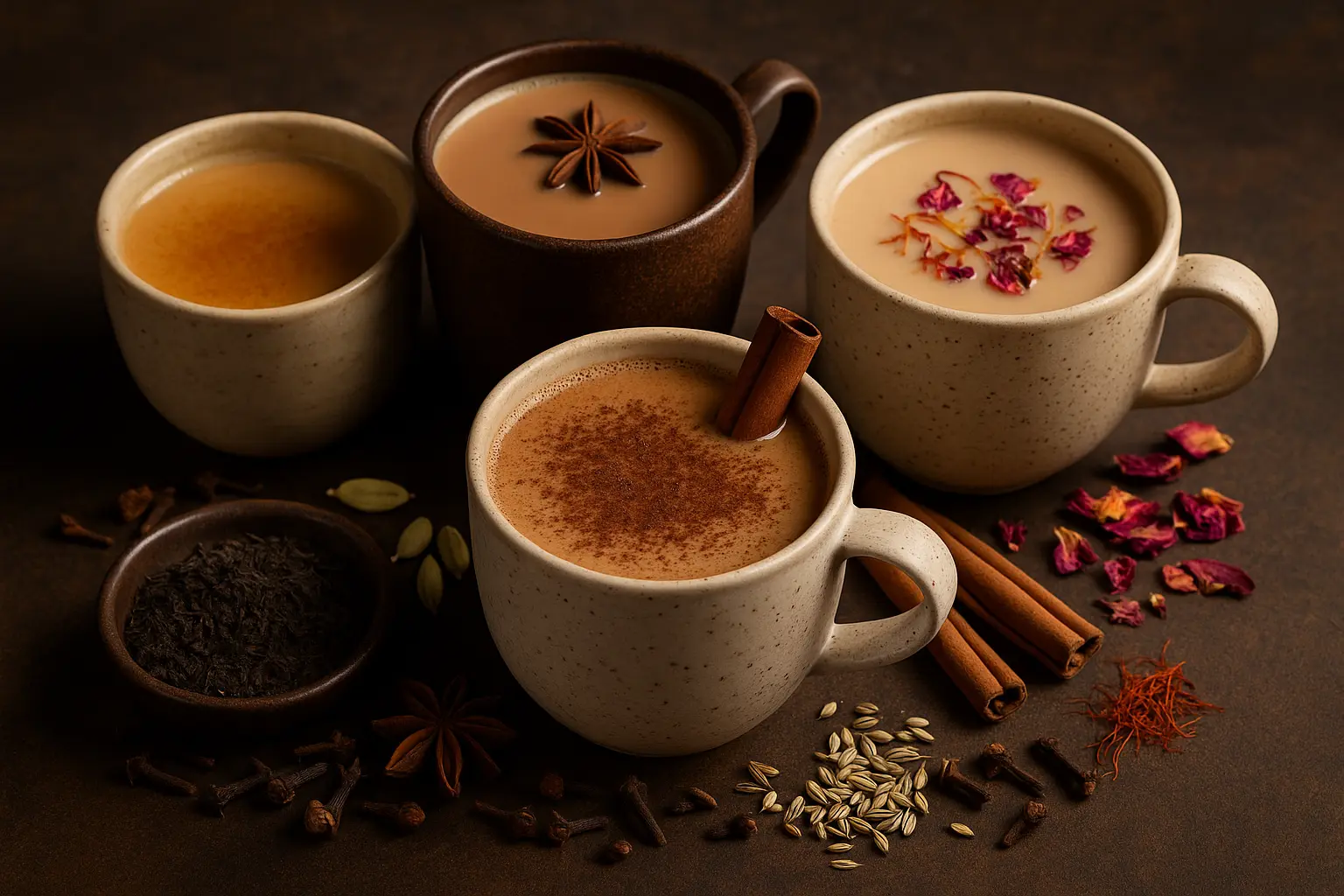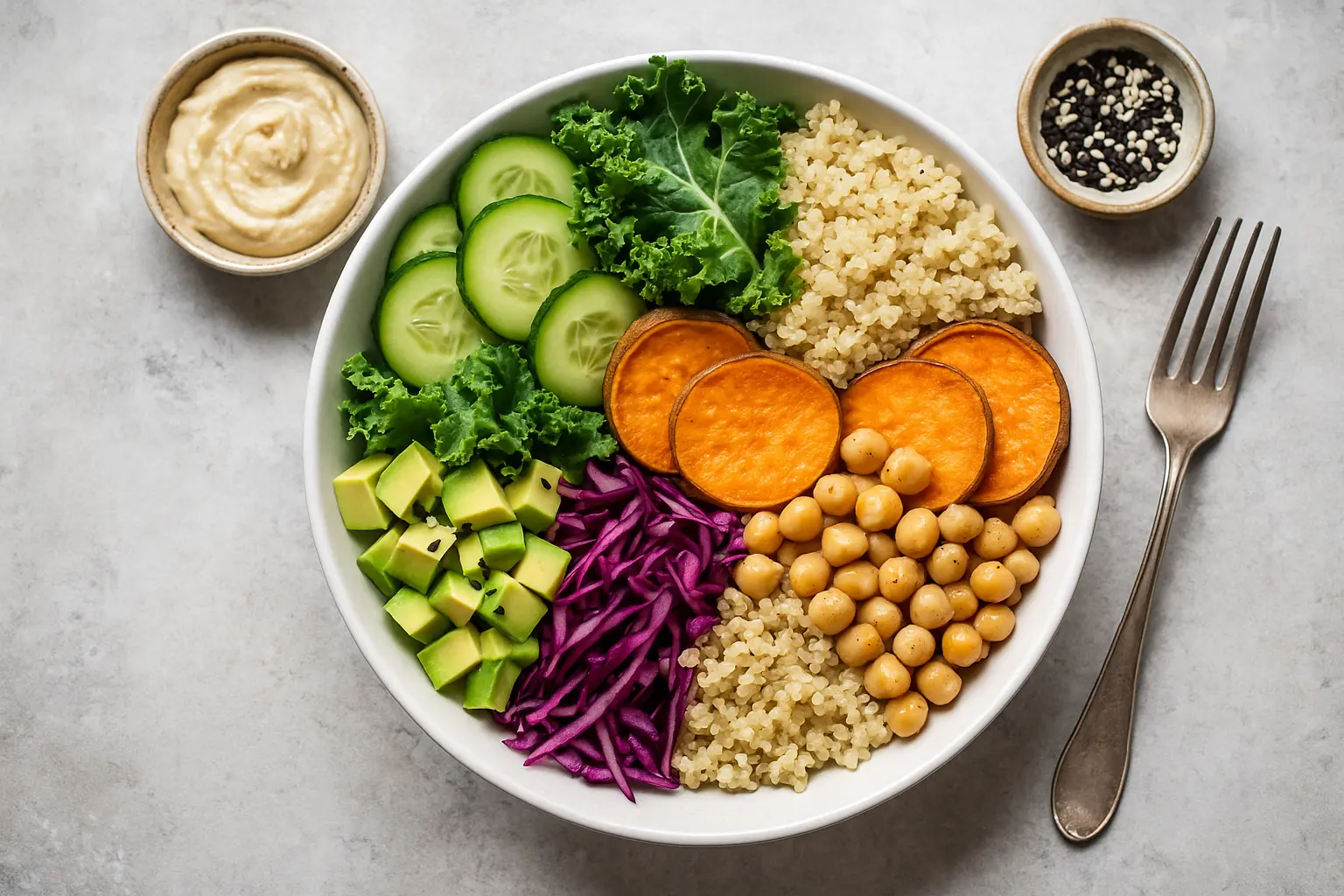Chai is not just a beverage; it’s an emotion, a ritual, and a cultural symbol that unites millions across the globe. From roadside chai stalls in India to artisanal coffee shops in Melbourne, chai has found a place in both traditional and modern kitchens. While the classic masala chai—brewed with black tea, milk, sugar, and spices—remains timeless, today’s food lovers are constantly re-inventing chai to suit health goals, dietary choices, and creative palates.
This blog dives deep into homemade chai variations with a twist—from vegan alternatives to fusion recipes like chocolate chai, rose-cardamom blends, Ayurvedic versions, and even global adaptations like Thai-inspired chai or turmeric chai lattes. You’ll learn not only the recipes but also the history, brewing techniques, spice pairing tips, and how to customize chai to match your mood or the season.

1. The Legacy of Chai: A Cultural and Historical Perspective
Before we get into recipes, let’s understand why chai is so cherished.
Origins: Tea cultivation in India was commercialized by the British in the 19th century. Initially, Indians drank black tea plain, but soon, local households began adding milk, sugar, and spices—creating the now-iconic masala chai.
Street Culture: Roadside chaiwallahs (tea vendors) became famous for their secret spice blends, served in earthen cups (kulhads).
Modern Day: With the global rise of café culture, chai lattes and fusion blends have become staples across the US, UK, and Australia.
Understanding this background helps us appreciate chai not just as a drink but as a canvas for creativity.
2. Essential Elements of Homemade Chai
Chai’s flexibility lies in its simple structure. To create variations, you must first master the foundation.
The Four Core Components
Tea Base – Traditionally strong black tea (Assam, Darjeeling, or CTC).
Milk or Alternatives – Dairy milk, oat milk, almond milk, or soy milk.
Sweetener – White sugar, jaggery, honey, maple syrup, or stevia.
Spices – Cardamom, ginger, cinnamon, cloves, black pepper, fennel seeds, nutmeg.
By adjusting these, you can create hundreds of chai variations.
3. Classic Masala Chai Recipe (Baseline for Variations)
Ingredients:
2 cups water
2 tsp black tea leaves
½ cup milk (or plant-based alternative)
2–3 crushed cardamom pods
½ inch fresh ginger (grated)
1 cinnamon stick
2 cloves
1–2 tsp sugar or jaggery
Method:
Bring water, spices, and ginger to a boil.
Add tea leaves and simmer for 3–4 minutes.
Add milk, simmer another 2 minutes.
Strain, sweeten, and serve hot.
This serves as the foundation recipe for all creative chai twists below.
4. Chai Variations with a Twist
4.1 Vegan Coconut Chai
Replace dairy with coconut milk.
Add a hint of vanilla for tropical notes.
Sweeten with jaggery or maple syrup.
Perfect for a creamy, dairy-free alternative.
4.2 Chocolate Masala Chai
Add 1 tsp unsweetened cocoa powder while brewing.
Finish with grated dark chocolate.
This is indulgent and works as a dessert drink.
4.3 Rose & Cardamom Chai
Infuse with dried rose petals.
Pair with cardamom and saffron.
Creates a floral, luxurious cup—perfect for celebrations.
4.4 Ayurvedic Golden Chai (Turmeric Twist)
Add ½ tsp turmeric powder + pinch of black pepper.
Enhances immunity and adds earthy flavor.
Great for winter or post-illness recovery.
4.5 Iced Chai Latte (Summer Special)
Brew strong masala chai, chill it.
Pour over ice with oat milk and cinnamon.
Refreshing yet spiced, ideal for hot days.
4.6 Herbal Chai with Tulsi & Mint
Add holy basil (tulsi) leaves + fresh mint.
Skip milk for a lighter, herbal tea.
Promotes digestion and stress relief.
4.7 Fusion Chai: Thai-Inspired Lemongrass Chai
Add lemongrass stalks + star anise.
Use condensed milk for richness (or vegan condensed coconut milk).
This offers a Southeast Asian twist.
4.8 Saffron Pistachio Chai
Infuse chai with saffron strands.
Garnish with crushed pistachios.
Perfect for festivals like Diwali or Eid.
5. Health Benefits of Chai & Its Variations
Digestive Aid: Ginger, cardamom, and fennel improve gut health.
Immunity Boost: Turmeric, cloves, and black pepper fight inflammation.
Energy: Black tea provides caffeine, balanced by milk for sustained release.
Vegan Options: Plant-based versions offer lighter digestion and inclusivity.
6. Ingredient Substitutions and Pantry Hacks
One reason chai is pantry-friendly is its adaptability.
Out of cinnamon? Try star anise or nutmeg.
No black tea? Use rooibos for a caffeine-free version.
Want low-sugar? Sweeten with stevia or monk fruit.
Need protein? Use soy milk or pea milk for extra nutrition.
7. Pairing Chai with Food
Morning Chai: Pair with Indian snacks like pakoras or poha.
Afternoon Chai: Best with biscuits, tea cakes, or samosas.
Festive Chai: Serve rose or saffron chai with laddoos or kheer.
Western Pairings: Chocolate chai with brownies, iced chai with granola bars.
8. Seasonal Chai Guide
Winter: Turmeric, ginger-heavy chai for warmth.
Summer: Iced chai with mint and citrus.
Monsoon: Spicy masala chai with pakoras.
Spring: Floral chai with rose or lavender.
9. Global Chai Adaptations
UK: Sweet milky chai latte served in cafés.
USA: Pumpkin spice chai latte (autumn favorite).
Middle East: Karak chai with condensed milk, very strong and sweet.
Japan: Matcha chai fusion.
These adaptations show how chai travels and evolves.
10. Tips for Brewing the Perfect Cup
Simmer spices before adding tea for maximum flavor.
Never over-boil milk; it alters the taste.
Use whole spices, not powdered, for clarity of flavor.
Adjust sweetness at the end to suit your taste.
Always strain chai for a smooth finish.
11. Chai as a Wellness Ritual
In Ayurveda, chai is more than refreshment—it’s therapy. Drinking spiced chai at the right time balances doshas (body energies). For example:
Kapha types benefit from spicy, peppery chai.
Pitta types may prefer cooling rose chai.
Vata types thrive on grounding cinnamon-ginger chai.
12. DIY Chai Spice Mix (Masala Powder)
Make a jar of spice mix to save time:
2 tbsp cardamom
2 tbsp cinnamon
1 tbsp cloves
1 tbsp black pepper
½ tbsp nutmeg
2 tbsp dried ginger powder
Grind together, store airtight. Add ½ tsp per cup for instant masala chai.
13. Chai for Different Audiences
Kid-Friendly: Use less caffeine, more milk, add cocoa for chocolate chai.
For Seniors: Jaggery-sweetened ginger chai for digestion.
For Vegans: Coconut, oat, or soy milk base.
For Students: Quick chai powder mix with hot water.
14. Chai in Modern Food Trends
Chai-flavored desserts: panna cotta, cheesecakes, ice creams.
Chai syrups for cocktails and mocktails.
Chai protein shakes post-workout.
Chai isn’t just a drink—it’s becoming an ingredient trend worldwide.
Conclusion: The Endless Canvas of Chai
Chai is like storytelling—every family, café, or culture adds its own chapter. From humble roadside stalls to Instagram-worthy lattes, chai remains one of the most versatile and soul-soothing beverages. The beauty of homemade chai variations lies in how easily they adapt to dietary preferences, seasonal moods, and creative experiments.
Next time you brew a cup, go beyond the usual. Add saffron for luxury, cocoa for comfort, or tulsi for wellness. After all, the best chai is the one that feels like home—no matter how many twists you give it.
Leave a comment
Your email address will not be published. Required fields are marked *




















